Skype: neodalle-travel
Tel: +86 135 7447 2266
E-mail: sales@visitaroundchina.com
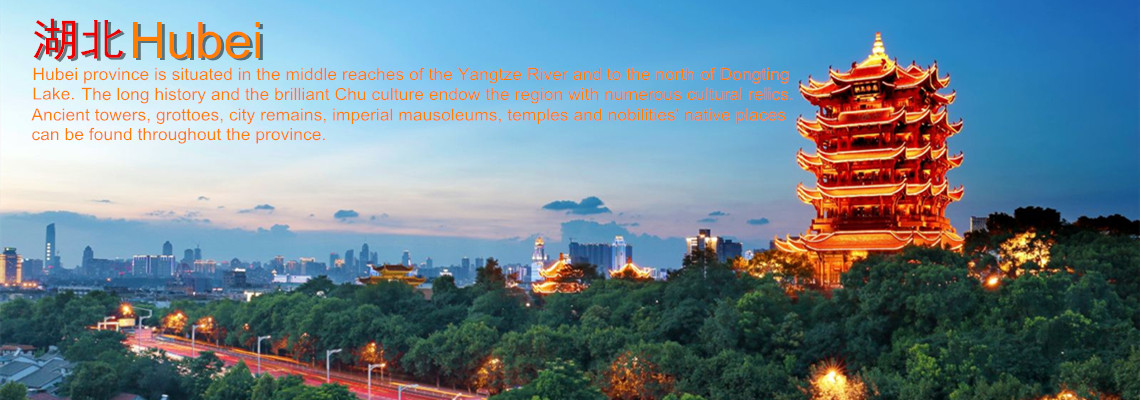
Xiangyang Ancient City, combination of Fancheng and Xiangzhou, is located in central China's Hubei Province. The anciant Xaingyang City was formed in the Western Zhou Dynasty (11th century BC-771BC), and the Xiangzhou was first built in the early Han Dynasty (206BC-220AD). Recently, the ancient city has been listed among state-level major cultural relic preservation sites since 2001.
What to see?
Xiangyang Ancient City enjoys widespread fame far and near due to its glorious culture, long history, rich cultural relics and beautiful landscape. The old Xiangyang city site is located on the banks of the Han River in downtown of the city. It was first built and its basic layout was formed during the Western Han Dynasty (206 BC-24 AD). It is recorded that the ancient city had six city gates and 4,210 crenels. During the Ming (1368-1644) and Qing (1644-1911) Dynasties, the old city was perfected to be even more spectacular. The six city gates and four watch towers stood straight up to guard the city.
The Ancient City Wall
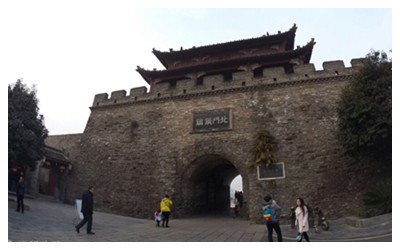 Boasting the long history, the city walls were mostly ruined in the late Yuan Dynasty. It was rebuilt on the same site in early years of Hongwu under the reign of Emperor Zhu Yuanzhang of the Ming Dynasty. It was 8.5 meters tall, with a parameter of 7.3 km. It had six gates and small cities as turrets around the four corners. Though the city walls were destroyed and rebuilt again and again, the style of early Ming Dynasty has remained. Now the profile of the city walls can be spotted, in particular the northern part. Linhan Gate, which was reconstructed in the Qing Dynasty, still stands atop on the walls, looking sophisticated in its ancient style. Climbing on the towers and looking afar, visitors will embrace on their eyes the meandering torrential Hanjiang River on the north; the uninterrupted Xianshan Mountain and city walls and streets on the south; the screen-like Chushan Mountain on the southwest, with its array of steep peaks out of the nature’s hands; and the small city called “City of Lady” on the northwest, which was said to be built by Madam Han, mother of Zhu Xu in the Jin Dynasty.
Boasting the long history, the city walls were mostly ruined in the late Yuan Dynasty. It was rebuilt on the same site in early years of Hongwu under the reign of Emperor Zhu Yuanzhang of the Ming Dynasty. It was 8.5 meters tall, with a parameter of 7.3 km. It had six gates and small cities as turrets around the four corners. Though the city walls were destroyed and rebuilt again and again, the style of early Ming Dynasty has remained. Now the profile of the city walls can be spotted, in particular the northern part. Linhan Gate, which was reconstructed in the Qing Dynasty, still stands atop on the walls, looking sophisticated in its ancient style. Climbing on the towers and looking afar, visitors will embrace on their eyes the meandering torrential Hanjiang River on the north; the uninterrupted Xianshan Mountain and city walls and streets on the south; the screen-like Chushan Mountain on the southwest, with its array of steep peaks out of the nature’s hands; and the small city called “City of Lady” on the northwest, which was said to be built by Madam Han, mother of Zhu Xu in the Jin Dynasty.
Today, the existing city wall of Ancient Xiangyang City is all that remains of the Ming Dynasty. Its outer is laid by pieces of large bricks and the inner is filled by the rammed earth. There is only one city gate left – the north gate "Suo Yue" which means the lock and the key, signifying the gate's military importance. Though the rest of the city gates were destroyed, the ancient city layout and defense system can still be easily recognized.
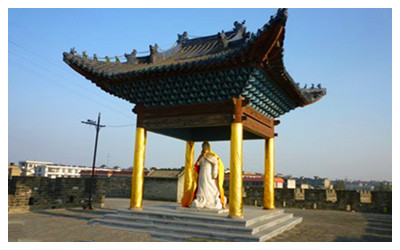 Zhongxuan Mansion
Zhongxuan Mansion
Zhongxuan Mansion is built for the commemoration for Wang Can, head of the “Seven Scholars of Jian'an Period under the reign of Emperor Xiandi of the Eastern Han Dynasty”. According to Xiangyang Prefecture Topography, the mansion was ruined in early years of the Republic of China. As a result, no one can tell what it looked like. Neither did people find any pictures about it. Therefore, when in rebuilding, experts had to seek reference of Kuixing Mansion, a building nearby that had been destroyed during the World War II. As a result, the current Zhongxuan Mansion was built according to Kuixing Mansion by Xiangyang Municipal Government in 1993. The entire Zhongxuan Mansion is 17 meters tall, with a total area of 650 square meters. It can be divided into three major parts: the wall, the platform and the mansion.
Palace of Xiangyang Prince
Palace of Xiangyang Prince is located on the southern corner of Xiangyang City. In history, the palace occupied a fair large area. According to Xiangyang Prefecture Topography, the then Xiangyang City had a perimeter of 15 huali, while the palace had taken 20-30 percent of the entire city. It is close to the city wall on the south and to East Avenue on the east, standing in grandeur with giant gates, red walls and green titles.
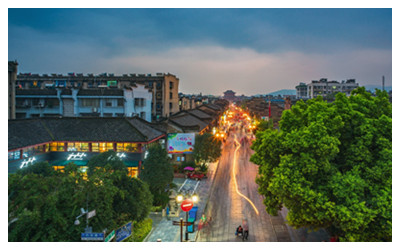 Beijie Street
Beijie Street
Beijie Street boasts a long history. It started taking shape in the Shang and Zhou dynasties, and flourished during the Tang and Song dynasties. Despite vicissitudes and wars, the location of the street remained unchanged. In 1993, it was built into a culture pedestrian street in the style of the ancients for the first Zhuge Liang Culture Festival and the National Conference on Historical and Cultural Famous City. In 2002, to help the street become more prosperous, another reconstruction was conducted successfully. Now Beijie Street has become the most thriving business street in Xiangyang City.
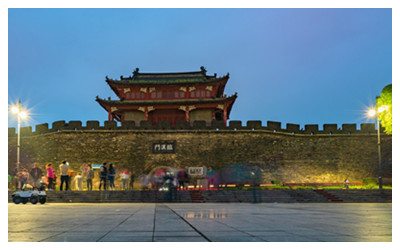 Zhaoming Tower
Zhaoming Tower
Zhaoming Tower,also called Bell and Drum Tower,is a landmark of Xiangyang, built for commemoration for Xiao Tong, Prince Zhaoming of the Liang Dynasty of the Northern and Southern dynasties. Historical records show that: “The tower sits in the center of the county town. It is a three-story building, facing south, with Bell and Drum as the two wings. It is a place of interest here.” In 1990, Zhaoming Tower was rebuilt on the basis of its 1000-year history. Now it is where Xiangyang City Museum is located.The towering shadow of city wall was reflected in the moat. The golden tiles and colored glazes made the city wall shine in the sunlight. What an imposing sight it was!
Travel Tips
Add: 128 Beijie Street, Xiangcheng District, Xiangyang City
Entrance Fee: CNY 80
Opening Hours:08:00-18:00
 Ask Questions ?
Ask Questions ?